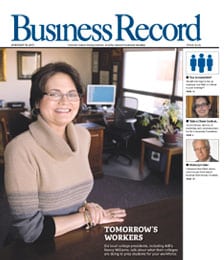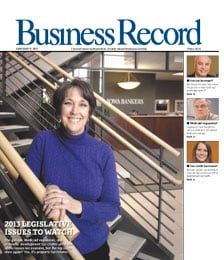Opportunities, pitfalls ahead for your nest egg

.floatimg-left-hort { float:left; } .floatimg-left-caption-hort { float:left; margin-bottom:10px; width:300px; margin-right:10px; clear:left;} .floatimg-left-vert { float:left; margin-top:10px; margin-right:15px; width:200px;} .floatimg-left-caption-vert { float:left; margin-right:10px; margin-bottom:10px; font-size: 12px; width:200px;} .floatimg-right-hort { float:right; margin-top:10px; margin-left:10px; margin-bottom:10px; width: 300px;} .floatimg-right-caption-hort { float:left; margin-right:10px; margin-bottom:10px; width: 300px; font-size: 12px; } .floatimg-right-vert { float:right; margin-top:10px; margin-left:10px; margin-bottom:10px; width: 200px;} .floatimg-right-caption-vert { float:left; margin-right:10px; margin-bottom:10px; width: 200px; font-size: 12px; } .floatimgright-sidebar { float:right; margin-top:10px; margin-left:10px; margin-bottom:10px; width: 200px; border-top-style: double; border-top-color: black; border-bottom-style: double; border-bottom-color: black;} .floatimgright-sidebar p { line-height: 115%; text-indent: 10px; } .floatimgright-sidebar h4 { font-variant:small-caps; } .pullquote { float:right; margin-top:10px; margin-left:10px; margin-bottom:10px; width: 150px; background: url(http://www.dmbusinessdaily.com/DAILY/editorial/extras/closequote.gif) no-repeat bottom right !important ; line-height: 150%; font-size: 125%; border-top: 1px solid; border-bottom: 1px solid;} .floatvidleft { float:left; margin-bottom:10px; width:325px; margin-right:10px; clear:left;} .floatvidright { float:right; margin-bottom:10px; width:325px; margin-right:10px; clear:left;}
In markets like this, a good investment adviser can be a lot like a navigator, a coach and a psychologist all rolled into one.
And that means advisers like Brett Halley are seeing their clients much more frequently, and are doing a lot more hand-holding.
“We normally meet with our clients quarterly,” said Halley, vice president and senior investment manager with Wells Fargo Private Bank in Des Moines. “I would say we’ve met with most of our clients four times since September, so a full year of contacts in the past four or five months, which is a good thing.”
Having a plan in place and the guidance of an objective adviser provides investors with flexibility to deal with changing economic conditions, said Tim Hawkins, president of The Masters Group Inc., an independent fee-only financial planning firm in Ankeny.
In separate interviews, Halley and Hawkins spoke with the Business Record about some of the strategies they’re taking with clients to maximize opportunities and avoid missteps in their retirement planning.
“If (clients) have a plan in place to address the volatility and (their) income needs, hopefully they’re in a better position to weather the volatility we’re dealing with,” Hawkins said. “One of the things we’re talking to clients about is having a personal recovery plan in place. I’ve heard a quote from (heavyweight boxer) Mike Tyson: ‘Everybody’s got a plan until they get punched in the mouth.’ You may have had a plan in place 12 months ago; that may have changed dramatically.”
Halley said many investors he works with are “de-leveraging” – paying off their personal and business debts – and in many cases are taking advantage of opportunities in investments designed to hedge against the likelihood of increases in taxes and inflation.
Overlooked tool
“From my perspective, I see that people are concerned about their investment returns,” said Hawkins, who is a member of Ed Slott’s Elite IRA Advisor Group, a select group of financial advisers specializing in retirement account issues. “But from a retirement account and savings standpoint, I think what’s really forgotten are the tax issues. I think (taxes) can be equally devastating to an overall plan as to what we’ve just gone through with the decrease in investment values.”
A combination of currently low tax rates and tax law changes makes the next couple of years “a great time” to consider converting a portion of a traditional individual retirement account (IRA) to a Roth IRA, he said.
“I think those Roths are a great tool that are probably one of the most overlooked from a retirement planning standpoint,” Hawkins said. “You don’t have any required minimum distributions and all the distributions are tax-free. And for those that are interested in transitioning some assets to beneficiaries, that’s a great way to do it, because of that tax-free aspect. And for those that qualify, we even suggest looking at the Roth IRA as a college savings tool, maybe pairing it with College Savings Iowa.”
In 2010, taxpayers with adjusted gross incomes of more than $100,000 will be allowed to convert a traditional IRA to a Roth, and the taxes on the converted amounts can be spread out over two years.
“So one of the planning strategies has been to make non-deductible IRA contributions, with the intention of taking those assets and moving them into a Roth,” Hawkins said. “Since they’ve already paid taxes on those contributions, there’s not going to be a significant tax hit; it would only be any accumulation on that conversion. A lot of company plans have the Roth 401(k) also, so it might be appropriate to look at those options as well.”
Inflation hedge
As the recession continues, “the biggest change we’re seeing from clients is that they’re liquidating debt,” said Halley, who has 18 years of experience in the investment management industry. “That whole de-leveraging process you’re hearing about on TV, it’s actually going on. They’re paying off home-equity loans, business loans.”
He and his colleagues advise clients to set aside sufficient cash reserves so that they won’t get flustered by short-term market fluctuations. “We do have some clients who are more liquid than they need to be,” Halley said. “We encourage our clients to stay in the market.” Among the investment vehicles Halley is recommending to clients are Treasury Inflation Protected Securities (TIPS). The principal of a TIPS increases with inflation and decreases with deflation, as measured by the Consumer Price Index, and when it matures, the holder is paid the adjusted principal or original principal, whichever is greater. The interest paid semiannually also increases if the principal increases.
“We’ve owned them for quite a while in client portfolios,” Halley said. With rising federal deficits and spending, “inflation will certainly be higher in the future, so having TIPS as part of the portfolio will certainly make sense.”
Municipal bonds, which have always been attractive for investors in higher tax brackets because their dividends are typically tax-exempt, are even more advantageous now, he said.
“What we’re seeing lately is an enormous opportunity in municipal bonds because of the flight to safety,” Halley said. “That’s creating a lot of supply of municipal bonds, so the yields are much higher than Treasuries, more than they’ve ever been in my career.”
In response to concerns about potential risk of default by municipalities, “we’re advising more positions across the country, smaller positions in each municipality,” he said. “We think there’s quite an opportunity there.”
Halley said commodities represent another investment opportunity, because in many cases they represent finite assets such as oil or precious metals for which demand will continue to increase. “So longer term, commodities make sense as part of a portfolio; it’s something that acts completely different than stocks or bonds,” he said.
Tax changes
Among the most significant changes in retirement tax law is that retirees who are over age 70 1/2 won’t have to take minimum distributions from their retirement accounts, under the Worker, Retiree and Employer Recovery Act of 2008.
“That’s certainly beneficial in some cases for those who may not need their IRA distribution to fund their living expenses,” Hawkins said. “It doesn’t force them to sell anything in this down market and reduces taxes for 2009, which is beneficial. Those benefits extend even to those who have inherited IRA accounts, so it applies to those who might be subject to distributions on a normal basis.”
Also in 2009, charitable IRA rollover rules were extended to enable retirees who are over 70 1/2 to use charitable contributions from their IRAs to satisfy part or all of their required distributions and keep their taxable income down, he said.
Hawkins also had some caveats for people who have become unemployed.”One of the mistakes we see frequently is the (employee accepting an) indirect rollover, where the employee is issued a check and has 60 days to roll the proceeds over to a new plan,” he said. Because the employer must withhold 20 percent for taxes on that type of distribution, an indirect rollover means the employee must come up with the difference in cash to roll over into a new account, or face a 10 percent penalty. “They need to be sure they do a direct, trustee-to-trustee transfer for their rollover,” he said.
A second mistake often made by laid-off employees is that they stop making payments on loans they have taken out against their 401(k) accounts, or fail to repay the balance if that’s required. In those cases, the amounts not repaid are considered a taxable distribution, and employees under age 59 1/2 will pay a 10 percent penalty on top of the regular tax liability. “So it’s certainly not something that someone who’s recently unemployed would be able to withstand very well,” Hawkins said.






